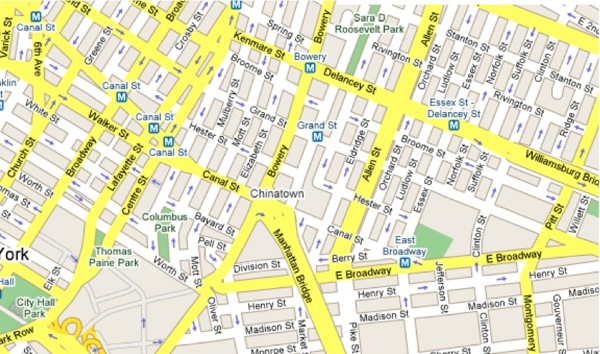Chinatown Manhattan
From Decoding New York
| Introduction |
| Manhattan |
| * Evolution |
| * What's Real |
| * Here v. There |
| * Economy |
| Flushing |
| * Evolution |
| * What's Real |
| * Here v. There |
| * Economy |
| Brooklyn 8th Avenue |
| * Evolution |
| * What's Real |
| * Here v. There |
| * Economy |
| Comparison |
| * Photo Gallery |
| * Sources
|
Chinatown is the oldest and largest Chinese community in New York City. Situated in Lower Manhattan between Delancey Street, Chambers Street, Broadway and East Broadway, it is a permanent fixture of the city that is iconic for its ethnic authenticity. Tourists and native New Yorkers alike make it a point to visit Chinatown for its ethnic stores, attractions, and foods. There are open air markets protruding from storefronts, stalls selling fresh vegetables, fruit, fish and dried herbs all alongside Chinese medicine stores, old Association buildings, tourist souvenir shops, banks, restaurants, meat markets and doctors' offices. Chinatown's economy is thriving - it is not only a well-established ethnic community, but also an important must-see for tourists and visitors to New York. This dichotomy of ethnic/natives and tourists is reflected in the areas of Chinatown. The oldest part of Chinatown, around Mott and Pell Streets, manages to cater both to the needs of visitors and residents. The eastern area of Chinatown, closer to the Bowery, is less traveled by tourists and maintains a proud authenticity. Even though Chinatown may be split between catering to the needs of tourists and the needs of the community, Chinatown's identity remains intact. An enclave that serves to welcome visitors to New York while also home to many of New York's Chinese immigrants, Chinatown is the perfect example of a successful, thriving ethnic community.

